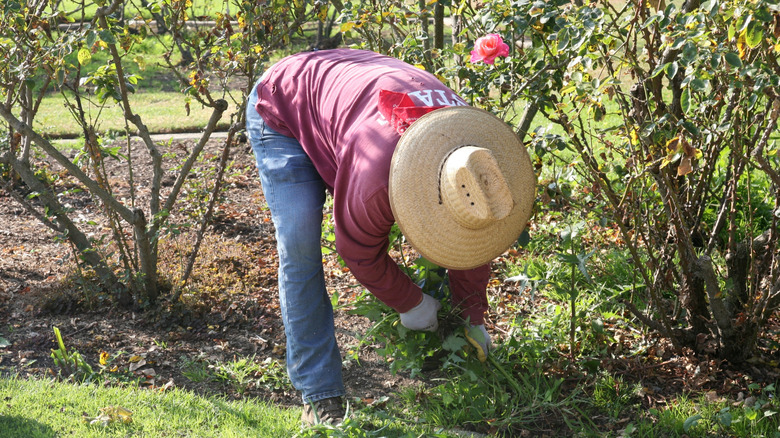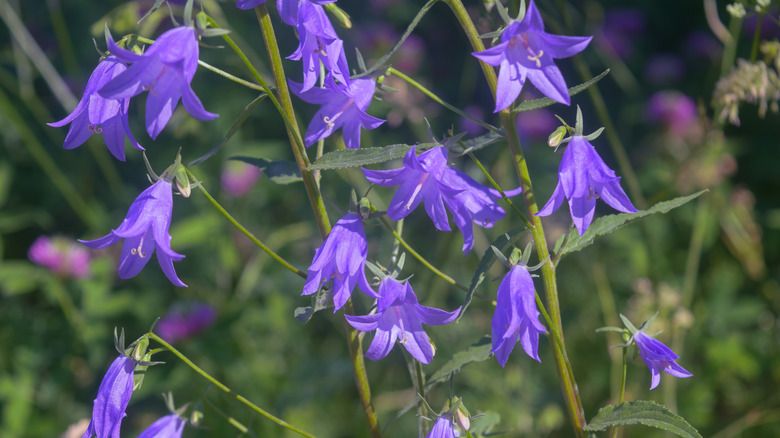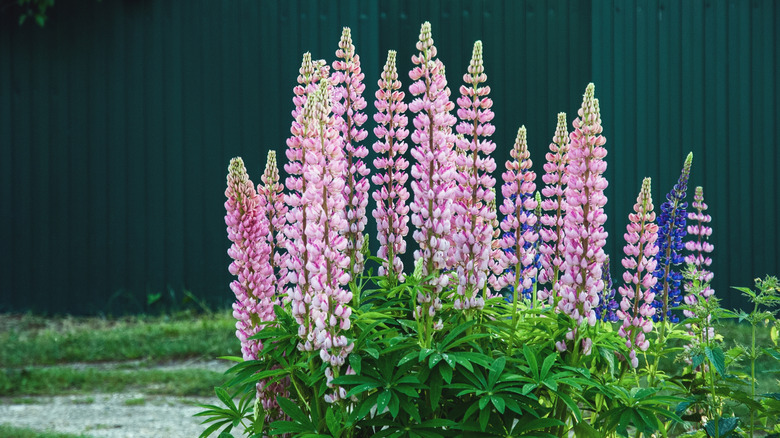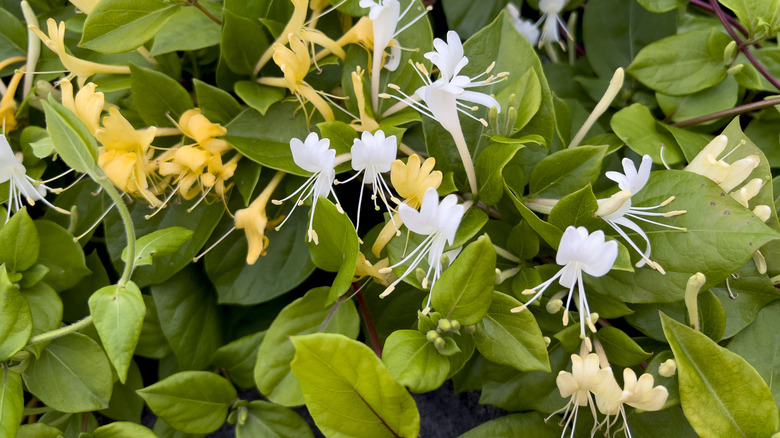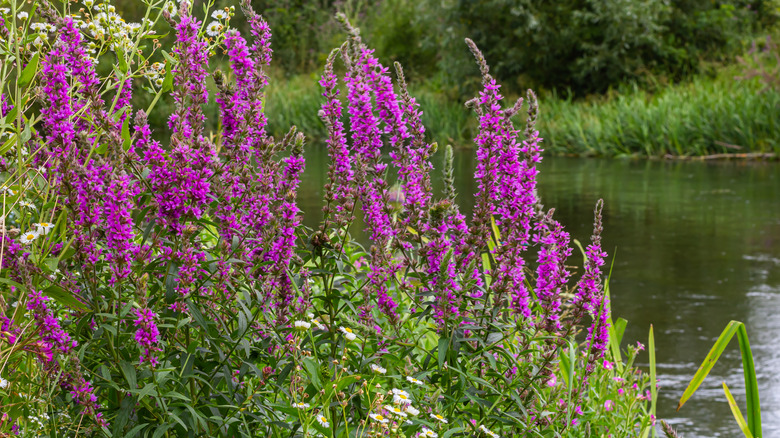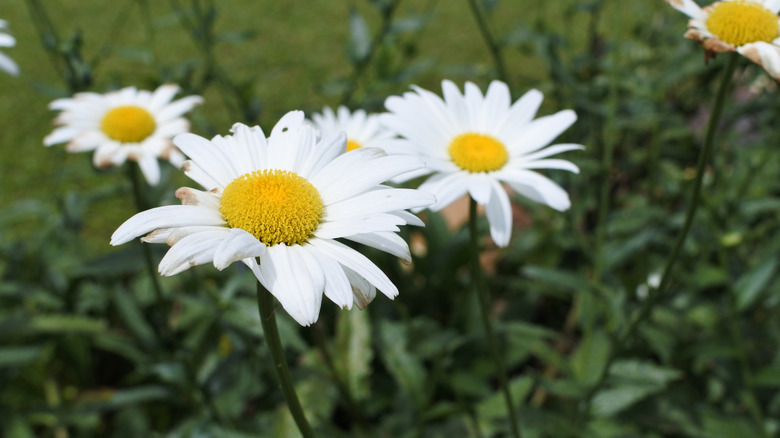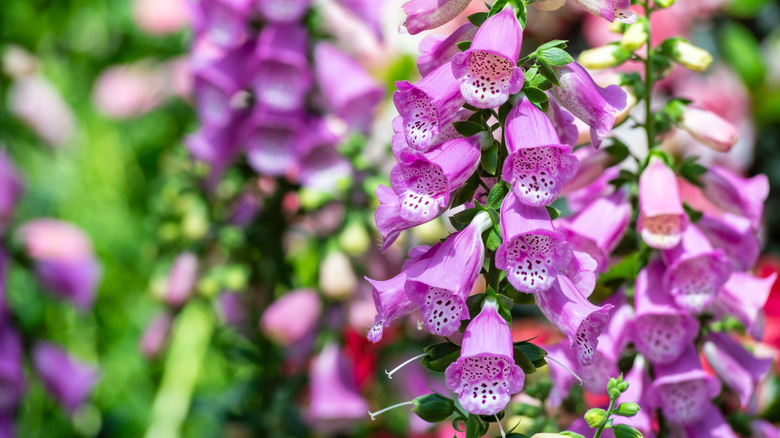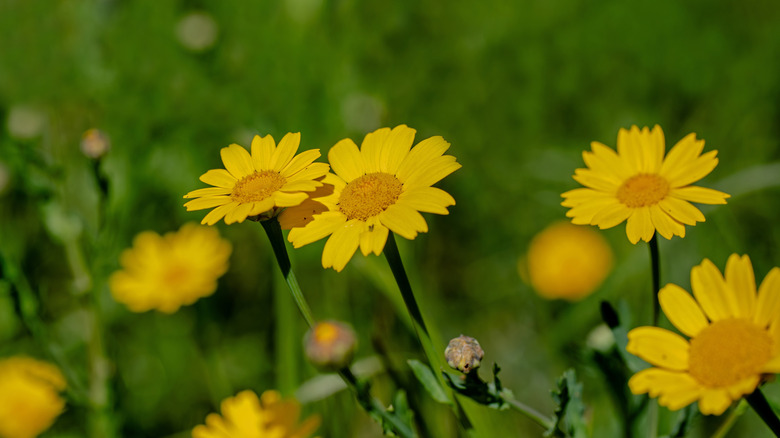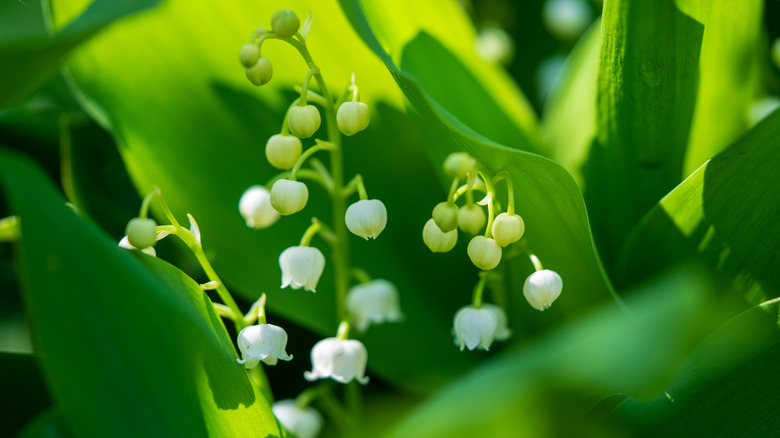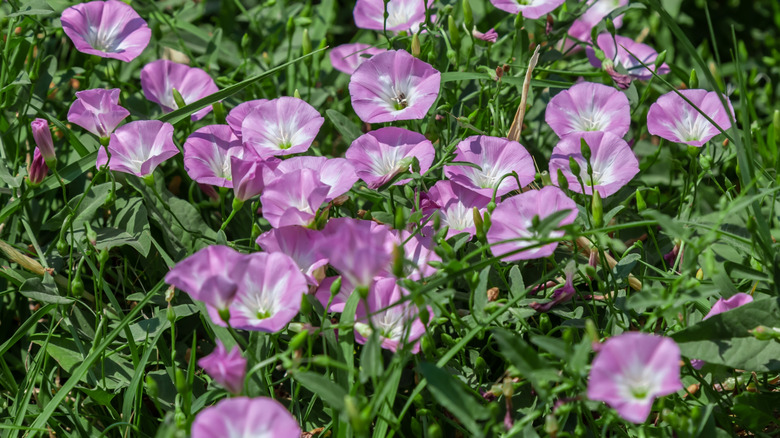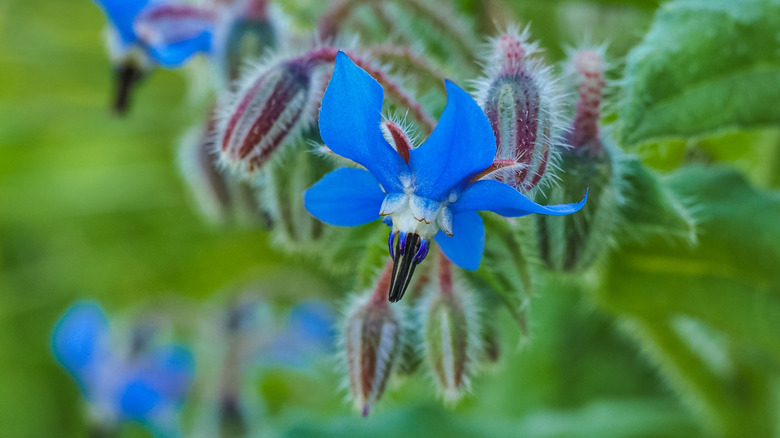10 Beautiful Self-Seeding Flowers You Might Actually Want To Avoid Planting
To a new gardener, the idea of self-seeding plants may sound brilliant — especially for plants that give an annual pop of color. Self-seeding flowers do what the name suggests; they drop seeds after the flowers dry out, and then put down roots without help from the gardener. As long as the soil conditions are right, they will sprout up for the next growing season. This saves you the money and time that would be required to buy and grow new plants each season. While there are many benefits to letting plants self-seed in your garden, choose flowering plants carefully. Some are invasive and can aggressively take over your limited garden space or even cause harm to the local ecosystem.
The right plants provide benefits in addition to their ease of regrowth when you let them self-seed in the garden. Planting them can increase biodiversity and be attractive to pollinators like bees and butterflies. There are some self-seeders that should not be on your list, though. Those that are invasive compete for resources with native plants, which threatens habitats for wildlife. Others can simply grow out of control, which is especially a problem if you're trying to make the most out of a small backyard garden.
Creeping bellflower
Despite its charming appearance, you should keep your admiration for creeping bellflower (Campanula rapunculoides) to glimpsing it on the roadside and other wild areas where it tends to take root. It has heart-shaped leaves and blue-purple blooms that look like dainty bells, but despite these features, avoid planting this beautiful flower, or you'll soon regret it. Creeping bellflower is invasive and may even take nutrients from your soil. The 3,000 to 15,000 seeds it can produce each year spread too easily, making it very difficult to control within the bounds of a garden.
Garden lupine
You might think garden lupine, also known as bigleaf lupine (Lupinus polyphyllus), is safe, given that one of its common names includes the word "garden". But outside the West Coast of the U.S., this plant, with its clusters of pea-like flowers, is invasive. It does no good for native pollinators in many areas of the country, and its leaves can even kill some butterfly and moth caterpillars. This tall plant is also known to crowd out native plants, even changing the soil to make it harder for natives to grow, and its seeds last for years, compounding the danger.
Japanese honeysuckle
There's a reason one of the most recognizable Japanese honeysuckle (Lonicera Japonica) is so recognizable. When this non-native fragrant vine drops its seeds, birds spread them far and wide. Its invasive nature makes Japanese honeysuckle one of the vining plants to avoid growing in your yard. The vines grow densely to the detriment of native wildflowers. Its white and yellow flowers set them apart from more garden-friendly native honeysuckle varieties.
Purple loosestrife
Not all flowers classified as weeds are bad for a garden, but purple loosestrife (Lythrum salicaria) is actually a noxious weed, even though the bushy plant has attractive purple flowering spikes. Their noxious weed status means that, in Minnesota and other states, they can't be sold and have to be eradicated. They're not only self-seeding but spread through underground roots known as rhizomes, making it a challenge to stop them from competing with other plants.
Shasta daisy
This one is more of an aggressive spreader than a danger to native flowers, but the Shasta daisy (Leucanthemum x superbum) is best kept out of gardens if you need to have neat borders. Another downside is that they can have an unpleasant scent. If you enjoy the classic white-petaled flower with its characteristic yellow center, it's safer to grow Shasta daisies in containers than to let them self-seed in the garden.
Common foxglove
There are some areas where the winsome common foxglove (Digitalis purpurea) is invasive – it tends to grow in clumps and drives out native plants. This self-seeder usually blooms the second season after planting, so you may not notice it right away if you've inherited it as a garden component. Despite the beauty of its showy, tubular flowers, common foxglove is also poisonous if eaten, which could get in the way of nurturing local wildlife or pose a danger to pets.
Golden marguerite
If you plant golden marguerite (Anthemis tinctoria), the vigorous deadheading you need to do to keep it from spreading too much may cancel out any time- and effort-saving benefit you would expect from a self-seeding flower. In addition to their tendency to take over space, they may need to be staked and have some of their blooms pinched so they don't get floppy. Save yourself some time with a lookalike yellow flower instead.
Lily-of-the-valley
Although it looks like it sprouted right out of a fairytale, lily-of-the-valley (Convallaria majalis) can be aggressive. It can displace the other plants in your garden, or even natives in the area, with its thick colonies of flowers grown by seed, so it most likely wouldn't play well in a scheme where certain plants grow in separate zones. This might outweigh the benefit of having its tiny white bell-shaped flowers in the mix. What's more, this flowering plant is poisonous due to the cardiac glycosides it contains.
Field morning glory
Morning glory vines can be a gorgeous sight, but one type to avoid is field morning glory (Convolvulus arvensis), as it's actually a type of weed also referred to as field bindweed. This flowering plant is not only known to be aggressive, it's also prohibited in 35 states. Skip the temptation of letting the white or pink blooms unfurl. This plant has deep roots and long-lasting seeds, and it will be a very difficult task to keep its matting vines away from fencing or other plants. Stick with standard morning glory (Ipomoea) instead.
Borage
Even though the blue, star-shaped petals of a borage (Borago officinalis) flower are beautiful, its self-seeding habit can cause it to invade spaces you're trying to preserve in your garden for open space or other flowers, making more work for you in the form of pulling stray plants up or deadheading the flowers. It's an herb that poses a threat to native flora in some areas. You may have better results growing them in containers, which — as an added bonus — can be moved to places where you'd like to attract bees.
